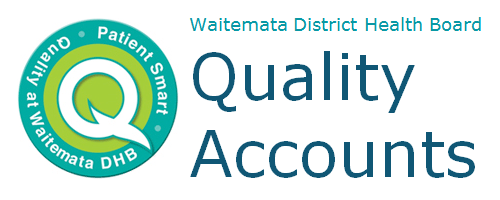
Autistic Spectrum Disorder (ASD) is a developmental disorder which mainly affects a child’s development of communication and socialisation skills. Children with ASD also may exhibit very challenging behaviour and anxiety. This creates stress for families st they try to understand and support their child’s needs and cope with the challenges presented.
What are we trying to achieve?
The aim of this project was to improve the consistency and quality of ASD assessments across the Child Health service.
Prior to undertaking this project we identified that:
- the quality of assessment, diagnosis and management of ASD varied widely depending on how the child entered our system and who saw the child
- although a NZ ASD guideline from the MOH existed, there was no pathway in NZ to organise the journey of patients through the health system
- our service had a "Developmental Service Coordinator"to gather information from families, schools and observations to help doctors determine a diagnosis, however this service was not being used consistently
The aims of improving the consistency and quality of ASD assessments are to:
- provide a diagnosis in a more timely manner for children referred with possible ASD by "referring to the ASD pathway" (that is, more information gathered by the Developmental Service Coordinator before their child's clinic visit)
- ensure all children diagnosed with ASD are routinely referred for appropriate community supports
- improve the competence and confidence of clinicians to assess and manage children by providing accessible, evidence-based information in a clear format
What have we done?
A multidisciplinary team including paediatricians, psychiatrists, speech language therapists, occupational therapists, social workers, nurses and developmental service coordinators worked together to develop this pathway.
Using New Zealand and international evidenced based medical literature, the team developed a user friendly interactive flow chart which incorporated links to support clinical decision making and management.
Paediatric Pathway for Autistic Spectrum Disorders
The pathway was implemented in 2015 by educating staff who would encounter patients from the point of referral through their clinical assessment. The pathway was made available for clinicians on the Waitemata DHB intranet.
Examples of the information available include:
- Information about ASD to support every step:
- Referrals
- Processing referrals
- Initial specialist assessment
- Management
- Follow up guidelines
- Recommended screening and diagnostic tools
- Guidelines for managing children and supporting families whether the diagnosis is:
- ASD
- Not ASD
- Uncertain
- Information pages for families and supportive community organisations
Examples of information to support patients with ASD
What did we find?
The team reviewed every child referred for ASD assessment from January – June in 2014, 2015 (when the pathway was implemented) and 2016 to assess the following:
- whether they were referred to the ASD pathway for information gathering by the Developmental Service Coordinator prior to their paediatric appointment
- diagnosis
- time from first paediatric appointment to diagnosis
They also reviewed the charts of 20 patients with ASD diagnosis from each year to determine which diagnostic criteria were used and which supports were provided.
Results
The following were identified as a result of the data review:
1. Shorter times from first paediatric appointment to diagnosis
- The average time to deliver a diagnosis improved by over one month for all patients
- There was a marked difference in time in time to diagnosis for patients triaged to the pathway compared to those not triaged to the pathway
- The percentage of patients referred to the pathway at triage to gather information prior to their appointment improved from 44% (2014) to 59.4% (2016)
Did we make a difference?
The team has improved their service for children and their families by providing a diagnosis more efficiently and putting supports in place more consistently. We have also supported doctors by providing practical information about ASD in a useful format, as well as providing more detailed information about the individual patients at the time of their clinic appointments.
Where to from here?
The team’s next step is to audit referrals for possible ASD and how we manage them. We will use this information to support general practitioners (GPs) to make more informed referrals, as well as to improve how consistently and accurately we manage referrals. We will also work with the Auckland Regional Health Pathways project to develop a regional ASD pathway for GPs.






